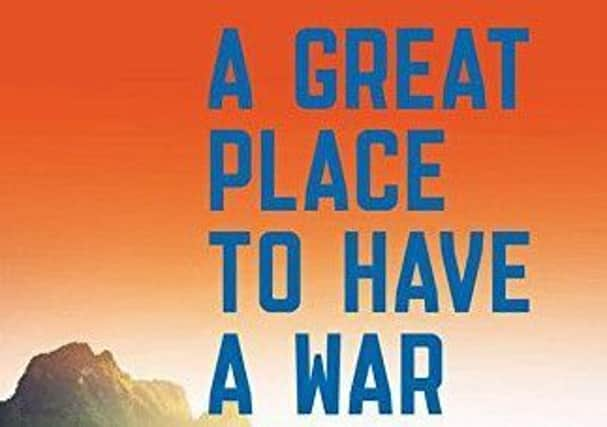Book review: A Great Place to Have a War, by Joshua Kurlantzick


Kurlantzick tells a complex story in a compelling page turner, achieving this with masterful management of detail, from the choice of statistics to the minutiae of life on the battlefield. For example, we discover the United States paid more than 75 per cent of France’s budget to fight its 1946-1954 war to retain its Indochinese colonies. Also, at the beginning of the book, we’re introduced to four key individuals working on the frontline: Vang Pao, the eccentric Laotian anti-communist general; Tony Poe, the CIA paramilitary who some say was the model for Marlon Brando’s Kurtz in Apocalypse Now; Bill Lair, Poe’s Laos-based CIA case officer; and Bill Sullivan, US Ambassador to Laos from 1964-69, and we return repeatedly to each one and their roles during the war and its aftermath. These four veterans of earlier wars personalise the murky big picture and the link between the presidencies of Eisenhower and Kennedy. It was Eisenhower and his “domino theory”, one country after another falling to communism, that made Laos the bulwark to stop communism engulfing Thailand and the Philippines. Eisenhower’s briefings ensured that Kennedy continued the secret CIA training and arming of Van Pao’s Hmong tribesmen without ever bringing the policy to Congress for approval.
With no oversight and with anti-war activists focusing on Vietnam, the unknown war escalated to include bombing raids, over 300 sorties per day sometimes in the 1960s, and two of the biggest battles in the whole of United States involvement in Indochina. Descriptions of the battlefields and the bombsites after the hostilities make grim reading. When the war finally ended in 1973, 10 per cent of Laos’s total population had been killed, and Laotians are still dying from the effects of antipersonnel bombs embedded in the soil. One of Barack Obama’s last acts as president was to visit Laos, the first US president to do so, and undertake to help remove more of these bombs, although he did not apologise for the war.
Advertisement
Hide AdKurlantzick has filleted all the declassified documents, highlighted Bill Sullivan’s “economies with the truth” when he stonewalled Congressional committees during the Nixon and Kissinger years, and has interviewed many of the campaign veterans, including Van Pao’s fighters, as well as Lair and Poe. He also shows how the war has echoes in the present day, pointing out that Edward Snowden’s leaks show the CIA’s budget has increased to such an extent that in 2012 it exceeded US State Department expenditure. Moreover, the Agency’s mission has moved from spying and basic foreign intelligence analysis to include full paramilitary activity, and the implications are to be seen in America’s covert activities in Pakistan, Yemen and Somalia.
The fates of the book’s four main characters are equally sobering. Poe turned to drink and Lair became a truck driver in Texas. Both suffered post-traumatic stress disorder. Van Pao siphoned off money from émigré Hmong fighters able to get to the USA, and their communities. Sullivan enjoyed a stellar career in the State Department, but his luck ran out when, as Jimmy Carter’s ambassador to Iran, he assured the President that the Shah would not be overthrown.
A Great Place to Have a War, by Joshua Kurlantzick Simon & Schuster, 323pp, available online only